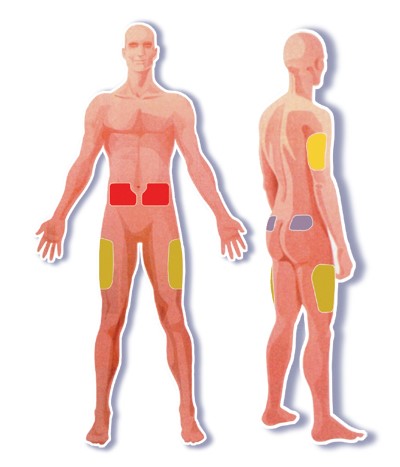You will have type I diabetes when your body does not produce adequate amounts of insulin. This requires insulin replacement otherwise your body will fail to regulate blood sugar and start burning up fat stores and this may lead to a life threatening condition called diabetic acidosis. An insulin shot delivers medicine into the tissue between your muscle and tissue to regulate blood sugar level. On the other hand, too much insulin may lower blood sugar levels to an extent that cause a condition called hypoglycemia, which may lead to symptoms such as shaking, paleness, perspiration, hunger, rapid heartbeat, and blurred vision.
How to Inject Insulin
Here are the 7 steps to inject insulin with a syringe:
- Wash your hands thoroughly.
- Hold the syringe properly – keep it upright with needle on top. Select the dose you want to inject by pulling the plunger down.
- Remove the caps from the needle and insulin vial.
- Push the needle into the stopper and then slowly push the plunger down. The insulin will be replaced by the air.
- Let the needle stay in the vial and turn them upside down. Keep pulling the plunger down. This will move the black tip of the plunger. Stop when you have the correct dosage on the syringe.
- Tap the syringe gently if you notice any bubbles in it. This will make bubbles to move up. You can push the syringe and release the bubbles back into the insulin vial. Pull the plunger down again.
- Hold the syringe like a pen and insert the needle at a 90-degree angle. You can change the angle to 45-degree if you are injecting insulin into a site with less fat. After inserting the needle, push the plunger down. Wait for at least 10 seconds and then remove the needle.
Note: Never use refrigerated insulin directly, you should wait until it comes to room temperature. If you use long-acting or intermediate insulin, be sure to mix the content well by rolling the vial between your hands. Do not shake it and never use insulin that is grainy, discolored, or thickened.
Here is a video to help you learn to inject insulin with a pen properly:
Injection Site and Insulin Absorption
Injection Site
 Most people take it in the abdomen, but other injection sites include the back of the upper arms, the outer side of the thighs, and the upper buttocks. These sites are more common for certain reasons. For instance, there is a layer of fat below the skin in all these areas and no nerves. It means you can inject in these areas without feeling much discomfort and the fat will help absorb the insulin.
Most people take it in the abdomen, but other injection sites include the back of the upper arms, the outer side of the thighs, and the upper buttocks. These sites are more common for certain reasons. For instance, there is a layer of fat below the skin in all these areas and no nerves. It means you can inject in these areas without feeling much discomfort and the fat will help absorb the insulin.
Which injection sites work better for you usually depends on your body type. Some people will always prefer taking an injection in the abdomen, but that is not a great choice for people who are very thin or heavily muscled. You should talk to your doctor to identify the best injection site and explain how to inject insulin.
Insulin Absorption
How your body absorbs insulin usually depends on the injection area. Your body absorbs it quickly when injected directly into the subcutaneous tissue in the abdomen. If you are taking rapid-onset insulin, you can inject it into your abdomen right after or just before your meal. In case of NPH insulin, you need slower absorption rate so you can inject it into the arms, buttocks, or thighs because the speed of absorption is not that quick if you inject it in these areas.
One very important thing to bear in mind when learning how to inject insulin is that exercise can alter the absorption rate.
- If you play basketball and have plans to play it after you take insulin, for example, choose a site other than your shooting arm since it may increase the absorption rate.
- Wait for at least 45 minutes after taking insulin if you prefer to inject it in a body part that you will use in a sporting activity.
Tips for Insulin Injection
Besides selecting right injection sites to maximize the effects of insulin, there are other things to bear in mind when taking insulin shots. For instance:
- Always ensure that the muscles directly above the injection site are relaxed to help you feel little pain when taking an injection.
- You can reduce pain by using an ice cube to numb your skin. Applying ice to the injection site just for a couple of minutes will do the trick. Be sure to swab it with alcohol.
- Do not insert the needle slowly and ensure you do not wiggle it while injecting or withdrawing it.
- Work with your doctor and maintain a chart to remember injection sites.
- Always maintain a distance of one inch when rotating sites within one injection area.
- Never inject insulin in areas with broken vessels or scar tissue. Do not inject in the roots of body hair.
There may be some blood or a raised area of your skin in the injection area and usually there is no need to worry about, it is a normal phenomenon when the needle passes through a small blood vessel. And this usually resolves on its own in a few hours or so.
